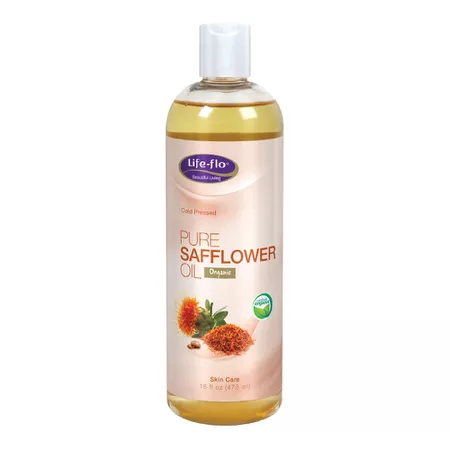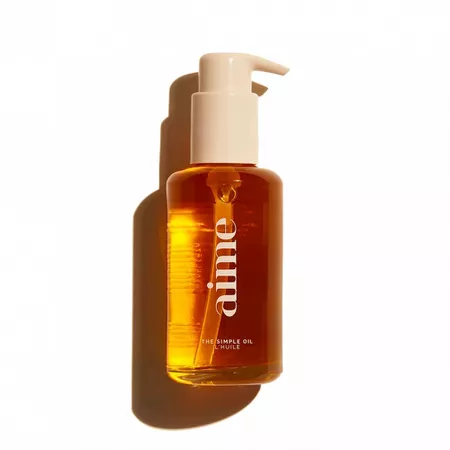
Getty
In This Article
What Is Safflower Oil?
Benefits
Side Effects of Safflower Oil
How to Use
The Best Products with Safflower Oil
Frequently Asked Questions
When it comes to acne-fighting ingredients, big names such as salicylic acid, retinol, and benzoyl peroxide are the first to come to mind. And rightly so—these are undoubtedly some of the most effective players in the space.1But theres another natural, versatile ingredient that may be worth incorporating into your quest for clear skin—safflower oil. We know what youre thinking: Oil? As an acne-fighter? Sure, a plant-based oil may be great for moisturizing, but how can it help combat blemishes? Here, experts explain how safflower oil can do exactly that—and much more.
Meet the Expert
Anna Guanche, MD, is a board-certified dermatologist, host of the Dr. Beauty Podcast and founder of Bella Skin Institute
Kim Walls is a product formulator and founder of BEB Organic.
Keep reading to learn all about the benefits of this powerful acne fighting oil.
Safflower Oil
Type of ingredient: Plant-based oil
Main benefits:Moisturizes the skin and is rich in protective antioxidants.2It also has anti-inflammatory effects and helps promote wound healing says Zalka, who adds that it can help reduce the size of blackheads and whiteheads as well.
Who should use it: Its very well-tolerated, so pretty much anyone can use it.
How often can you use it: You can use safflower oil up to twice a day.
Works well with: Zalka says it pairs especially well with vitamin C, another potent antioxidant.
Dont use with: There are no known interactions; Walls says it works well with nearly every other skincare ingredient.
What Is Safflower Oil?
"Safflower, aka Carthamus tinctorius, is a flowering plant known as the 4,000-year-old herb," says Zalka. It has a long history of varied uses, including for culinary purposes (safflower oil is widely considered to be one of the healthiest oils you can cook with3), as a dye for textiles (thanks to the oils rich, yellow-orange-red tone), and skincare. Safflower oil specifically is made from cold-pressing the seeds of the flower, she says.
Benefits of Safflower Oil for Acne
Theres (obviously) no shortage of plant-based skincare oils out there, each with its own particular list of pros and cons. That being said, safflower oil has some unique features that help it stand out from the rest of the crowd. "Safflower is one of a very few oils that, as a stand-alone ingredient, has a beneficial fatty acid composition for the skin," says Walls. "If cold-pressed and processed properly, safflower oil has a higher level of antioxidant and antimicrobial properties than many other oils commonly used in skincare."
Has antioxidant properties: These come from both the vitamin E naturally found in safflower oil, as well as unique flavonoids. Zalka cites a 2020 study published in the Journal of Microbiology and Biotechnology that found that, more specifically, safflower seed oil helps inhibit damage caused by exposure to UVB rays.4And thats a major win not only for the general health of the skin but also the appearance of the skin—the research found safflower seed oil to be effective at inhibiting UVB-induced photo-aging by minimizing the effects of an enzyme that breaks down collagen. Long story short, safflower oil has anti-aging benefits, too.Is a natural anti-fungal and antimicrobial: Research indicates that these properties, combined with safflower oils wound-healing effects, can be helpful in treating skin injuries.2These attributes are a major plus when it comes to helping address acne.Delivers moisture to the skin:"Safflower oil is specifically indicated for damaged, dry skin because it has high concentrations of omega-6 fatty acid linoleic acid that allows quick absorption without a greasy consistency to moisturize the skin," explains Guanche. "Safflower oil contains a rich source of fatty acids that help improve the skins natural barrier and improve overall skin health, while containing a light weight consistency and moisturizing agent that can penetrate the skin without causing irritation," she continues.Non-comedogenic: All of the above benefits combined make safflower oil a major win for those battling breakouts. First and foremost, its considered non-comedogenic, so theres less concern for clogged pores, notes Zalka.Anti-inflammatory: Its anti-inflammatory properties can help quell or reduce skin redness, Zalka says. "The high concentration of fatty acids help treat dermatitis and speed the healing time for wounds," adds Guanche.High in acne-fighing linoleic acid: Safflower oil can also be a good option for those dealing with blackheads and whiteheads as well, according to Zalka. This may be due to one of safflower oils more unique distinguishing features, an extremely high amount of linoleic acid—around 70 percent.5"This is arguably the hero component for acne prevention, as safflower oil may help in reducing the size of blackheads and whiteheads," says Zalka.
Side Effects of Safflower Oil
Our experts underscore the fact that safflower oil is generally very well-tolerated. That being said, you should always patch test before starting a new ingredient. Walls suggests avoiding it if you have an allergy to chrysanthemum, marigold, daisies, or related plants, as you might also have an allergy to safflower.
When in doubt, Zalka says you can always do a patch test: Apply a dime-sized amount to the inside of your wrist and monitor the skin for any signs of reaction for 24 to 48 hours. It also bears mentioning that safflower oil may reduce clotting in some individuals, likely due to the high vitamin E content, says Zalka. As such, anyone with a known clotting disorder or who is taking anticoagulants should use it with caution.
How to Use Safflower Oil
The big caveat with safflower oil is that the quality matters—a lot. As Walls mentions, it needs to be in the purest form possible, meaning cold-processed and minimally-processed. "The key to getting the most benefit from safflower oil is to ensure it isn’t processed into something that nature never intended it be," she says, adding that seeking out organic safflower oil is also a good idea.
To that point, the experts we spoke with suggest looking for straight-up safflower oil and applying two to three drops directly to the skin (versus using skincare products where its mixed with other ingredients). It does tend to be fairly inexpensive and easily accessible, notes Zalka, which is always a win. Ideally, safflower oil should be stored in a dark, opaque bottle to try to ward off light-induced degradation.
The Best Products with Safflower Oil

Pure Safflower Oil
$13.00
Shop
Our experts recommend using pure, cold-pressed safflower oil, and this affordable option fits the bill. Not only can you use it on your face, but you can add a few drops to your body lotion or hair conditioner for a potential moisture boost.

The Simple Oil
$53.00
Shop
This lush cleansing oil is formulated with a blend of eight (yes, eight!) different oils, including safflower, jojoba, sea buckthorn, and camellia, meant to effectively remove makeup without stripping the skin. And since it doesnt have any emulsifiers, it can go triple-duty as a body, face, and hair oil.
What is better for acne-prone skin — safflower oil or sunflower oil?
According to Guanche, "Safflower oil is very similar to sunflower oil and the comedogenic rating of safflower oil is zero, meaning it will not generally contribute to acne breakouts."
What step should I apply safflower oil in my skincare routine?
If you are using safflower oil in the morning, it should be applied before your sunscreen and after your moisturizer. If you are applying at night, it should be the final step of your skincare routine, after your moisturizer.
Article Sources
Kraft J, Freiman A. Management of acne. CMAJ. 2011;183(7):E430-E435. doi:10.1503/cmaj.090374
Khémiri I, Essghaier B, Sadfi-Zouaoui N, Bitri L. Antioxidant and antimicrobial potentials of seed oil from Carthamus tinctorius L. in the management of skin injuries. Oxid Med Cell Longev. 2020;2020:4103418. doi:10.1155/2020/4103418
Schwingshackl L, Bogensberger B, Benčič A, Knüppel S, Boeing H, Hoffmann G. Effects of oils and solid fats on blood lipids: a systematic review and network meta-analysis. J Lipid Res. 2018;59(9):1771-1782. doi:10.1194/jlr.P085522
Jeong EH, Yang H, Kim JE, Lee KW. Safflower seed oil and its active compound acacetin inhibit UVB-induced skin photoaging. J Microbiol Biotechnol. 2020;30(10):1567-1573. doi:10.4014/jmb.2003.03064
Matthaus B, Özcan MM, Al Juhaimi FY. Fatty acid composition and tocopherol profiles of safflower (Carthamus tinctorius L.) seed oils. Nat Prod Res. 2015;29(2):193-196. doi:10.1080/14786419.2014.971316
-->